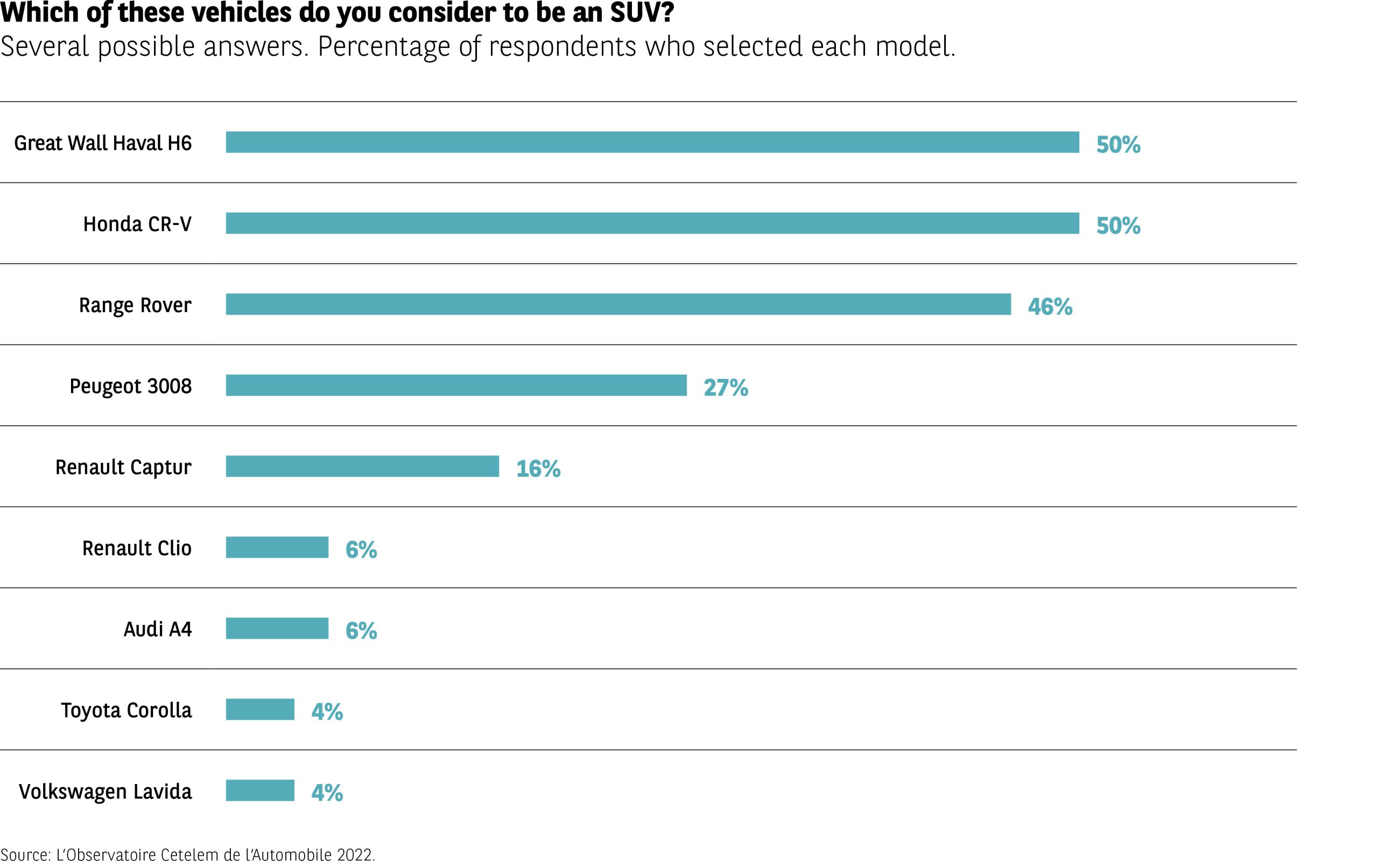A vehicle whose identity is unclear


There are only a few letters’ difference between the words acronym and anonymity, with a concept’s meaning often hidden in the former to the detriment of wider awareness. However, this is not something that can be said about the term “SUV”. Indeed, these three letters have been extremely quick to make their mark on the automotive world.
Yet, rightly or wrongly, these three letters are the subject of much discussion, not always based on rational arguments, leading to a degree of polarisation that is quite unusual.
Three letters with multiple meanings
When an acronym becomes a common noun, this is often a mark of its success. The term SUV is the perfect example. In the space of four decades, it has become such a widely used term across the world that one almost forgets what the letters stand for.
So it is worth reminding ourselves that SUV stands for Sport Utility Vehicle. Behind this acronym swirls a semantic maelstrom that conceals all sorts of considerations. The words themselves vary in meaning depending on the country in which they are used. In its most literal sense, “utility” refers to the practical and utilitarian nature of such a vehicle, while “sport” (which is sometimes spelled with an “s”) refers more to outdoor leisure pursuits than to the car’s sportiness or performance. The term “vehicle” may seem more transparent, but it can also carry a hidden meaning, since the word tends to be used instead of “light truck” in the United States, for reasons relating to fuel consumption regulations.
Our working definition of SUV
For this survey, we relied on a definition that is broad enough to reflect the reality and diversity of the SUV segment. Today, we consider an SUV – short for “Sport Utility Vehicle” – to be any family car whose styling resembles that of a sporty off‑roader. Although this is a diverse category, certain features are common to all SUVs: an elevated ride height and driving position, with a taller stance and more interior space than other vehicles of a similar size. And while this is not generally the case, some SUVs also offer 4-wheel drive or a high towing capacity.
Uncertain origins
The term SUV actually appears to predate the vehicles to which it refers today, having been used in the United States as early as the 1940s. Indeed, the Willys jeep, widely considered to be the forerunner of the modern SUV, could be seen cruising around the roads of Europe during the Second World War. To find the SUV’s ultimate forefather, one could even go back to 1935 to pull the Chevrolet Suburban Carryall from the mists of time. From a marketing perspective, the term Sport Utility Vehicle began its semantic journey into common parlance in a brochure for the 1974 Jeep Cherokee.
If we stick to a strictly automotive frame of reference, it seems impossible to determine which vehicle was the first in a long line of SUVs. The Jeep Wagoneer, Range Rover, Toyota RAV4 and Suzuki Vitara were all stepping stones that preceded the emergence of cars like the Volvo XC and the Nissan Qashqai in the 2000s. What’s more, the very nature of the various vehicles on offer further muddies the waters. With the option of four-wheel drive, two-wheel drive or the ability to switch between the two, but also vehicles that are sometimes based on saloon car platforms and sometimes not, it is difficult to decide which SUV to pick.
It is also worth noting that a French vehicle registration document cannot carry the description “SUV” and that this is not a term legally defined by the type approval authorities.
A variety of designations
To further complicate matters, carmakers have removed the three letters from the back of their vehicles and launched headlong into a process of creative brainstorming to explore new semantic territory. So we now have crossovers, what the media likes to call faux 4x4s and even Sport Activity Vehicles. Even language specialists struggle to define the genre with any real precision. Indeed, a leading French dictionary publisher once incurred the wrath of the French Association of Vehicle Manufacturers for defining an SUV as “a four-wheel drive MPV”. The fact is that only a small proportion of SUVs are equipped with four-wheel drive.
Body shape isn’t everything
The motorists surveyed for this 2022 edition of L’Observatoire Cetelem de l’Automobile attest to the ambiguity surrounding the SUV concept. We asked them to identify which of nine silhouettes belonged to SUVs (Fig 1).
They had no trouble recognising the saloons. More than 9 out of 10 respondents identified them as such. But when it came to identifying the SUVs, they were much less successful. Indeed, while the Greatwall Haval, the Honda CRV and the Range Rover were singled out as SUVs by 1 in 2 respondents, the Peugeot 3008 was only picked by a quarter of those surveyed. And only 16% thought the shape of the Renault Captur resembled that of an SUV.
Fig 1 – Models most associated with SUVs
Download this infographic for your presentations The infographic lists several car models and displays the share of respondents who associate each with an SUV.
Models and percentages are:
Great Wall Haval H6: 50%
Honda CR-V: 50%
Range Rover: 46%
Peugeot 3008: 27%
Renault Captur: 16%
Renault Clio: 6%
Audi A4: 6%
Toyota Corolla: 4%
Volkswagen Lavida: 4%
Strong SUV-identified models such as the Haval H6 or CR-V score high, while sedans like the Clio or Corolla are rarely perceived as SUVs.
Source: L’Observatoire Cetelem de l’Automobile 2022.
The infographic lists several car models and displays the share of respondents who associate each with an SUV.
Models and percentages are:
Great Wall Haval H6: 50%
Honda CR-V: 50%
Range Rover: 46%
Peugeot 3008: 27%
Renault Captur: 16%
Renault Clio: 6%
Audi A4: 6%
Toyota Corolla: 4%
Volkswagen Lavida: 4%
Strong SUV-identified models such as the Haval H6 or CR-V score high, while sedans like the Clio or Corolla are rarely perceived as SUVs.
Source: L’Observatoire Cetelem de l’Automobile 2022.
